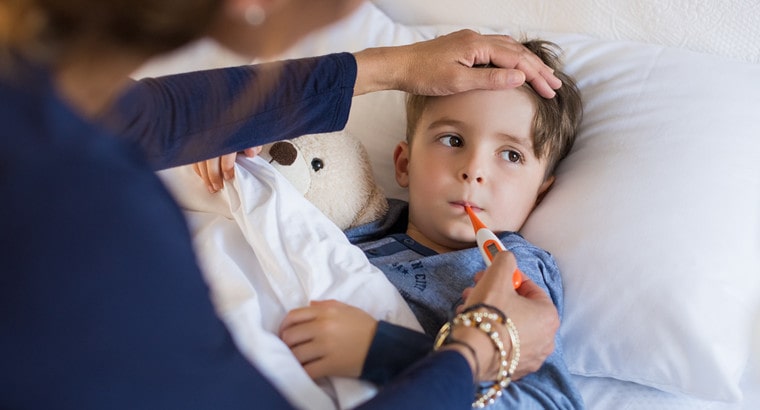Children, especially younger ones, are more susceptible to diseases because of their premature immune systems. It becomes more concerning if they can’t properly tell their parents about the pain. As parents, seeing your child sick is one of the most challenging parts of parenting them.
Furthermore, some diseases are unique to their age group or are a common experience during their age, and the best way you can fight against them is to learn about them. Fortunately, there are several ways that you can prevent and treat common childhood diseases.
Asthma
Asthma is a relatively common illness in children, usually called childhood asthma. Unfortunately, children with this illness can’t be cured and might have to live with the condition into adulthood, but they can still live everyday life with proper interventions.
At present, it’s concerning to witness your child have shortness of breath with a wheezing sound when exhaling. Due to this condition, they might also have trouble sleeping and frequent cough, which can worsen if it gets triggered.
If you notice that your child has difficulty breathing or, in worst cases, see their chest and sides pulling inward when breathing in, it’s best to deliver to emergency care ASAP. The doctors will assess their condition and determine the proper treatment for your child.
They might prescribe you medications like Singulair with a costly price tag. Fortunately, there are Singulair Promotions you can look into to get discounts. Aside from that, there might be other significant lifestyle changes that you should consider doing to improve your child’s quality of life.
Urinary Tract Infection
Urinary tract infection (UTI) is an issue related to your child’s bladder that results from bacteria buildup in their urinary tract. This disease is fairly common in children and can be treated with antibiotics.
Most urinary tract issues in children are usually caused by bacteria entering their urethra, which can result in a burning sensation when they pee, usually described as painful. UTI also makes them want to pee frequently, and you might observe a change in their normal toilet habits. Additionally, the pee also tends to have a foul smell.
If your child starts complaining about difficulty peeing, it would be smart to visit your pediatrician immediately. They must collect urine samples to test for UTI and determine the proper treatment depending on the type of bacteria found. Once your child starts receiving treatment, you should consider ensuring that they drink plenty of fluids as a preventive measure.
Chickenpox
Chickenpox is most common in children under ten years old and is a highly contagious disease. It causes itchy rashes that eventually develop into blisters after a few days. The rashes usually appear on the chest, following the back, face, and entire body. Fortunately, chickenpox can be prevented by getting two doses of vaccine.
One fun fact about this disease is that 90% of adults build immunity to it because they’ve had it before. So, once your child experiences chickenpox, it’s less likely they’ll contract them for a second time.
Skin Diseases
Children are susceptible to common skin issues due to their weak immune systems. Their immunity may not be as strong as the adults, so their health barrier isn’t as combative compared to older people. Aside from that, their skin is also more sensitive, which can be easily irritated. That’s why there are a fair amount of skin diseases that children experiences, including the following:
• Diaper Rash. For babies, diaper rash is the most common type of dermatitis resulting from the moisture in your baby’s diaper that causes irritation. The best way to prevent this is to change the diapers frequently and keep the diaper area as clean as possible. Fortunately, there are available ointments that you can apply to protect your skin.
• Eczema. Another fairly common skin problem is eczema, which usually begins in infancy. It usually improves with proper treatment as the child reaches school age or puberty. It’s a result of your child’s skin barrier and immune system. So, the best thing you can do is help your child avoid allergic triggers and find suitable lotions or creams for their skin. Aside from that, a good warm bath will also help their condition.
• Contact Dermatitis. This skin problem affects any child and occurs when your child comes into contact with an irritant or allergen, such as poison ivy, certain soaps, detergents, cement, nickel, etc. It causes an itchy skin rash that can be painful for them. So, if your child has triggers, it’s best to keep anti-itch creams and topical steroids in your medicine kit.
Gastroenteritis
Gastroenteritis, also called stomach flu, isn’t similar to other common flu. However, it can easily spread from one kid to another, which results in diarrhea, nausea, and vomiting. There’s no definite cause of gastroenteritis in children because it’s usually caused by different things, which include parasites, viruses, bacteria, or some medications. Other stomach flu symptoms include smelly and watery stool, muscle and abdominal pain, and a slight fever.
If your child starts to vomit and poop frequently, keep them hydrated as you go to the doctor. Let them drink any fluids except anything that contains milk. Take note that stomach flu is contagious, so prevent contact with other people and inform their pediatrician about their condition.
Final Thoughts
Parents only want the best for their children. So, watching their child suffer in pain due to diseases is just too much for them. To ease your worries as a parent, learning about common diseases, such as those listed above, will help you stay informed and ready if your child starts showing symptoms. Thus, never stop learning and preparing yourself for the quality of life you can offer your child.










